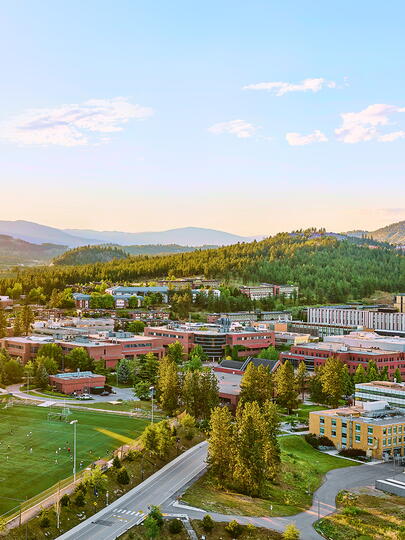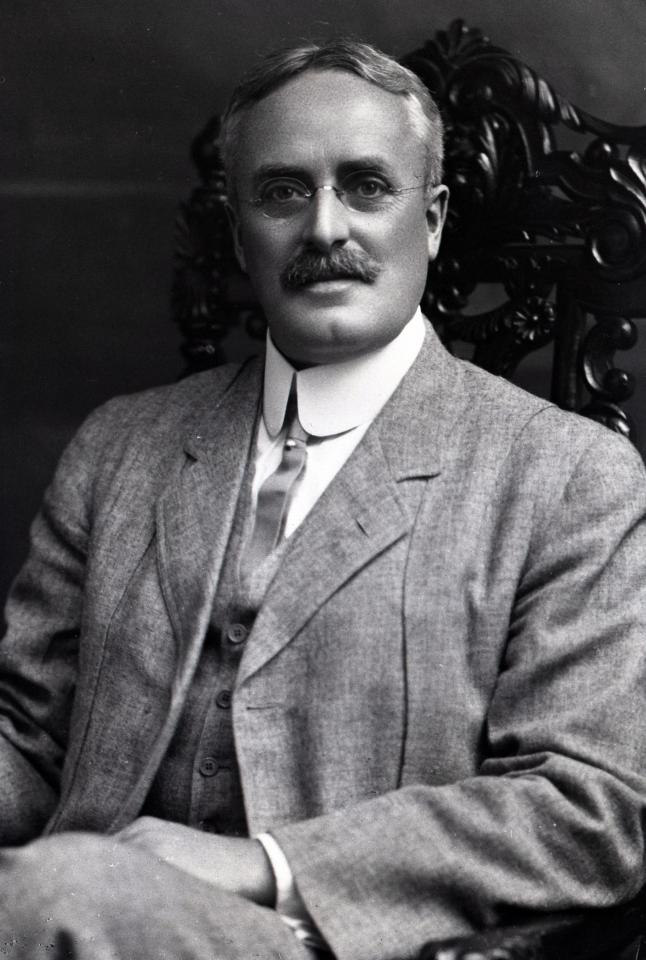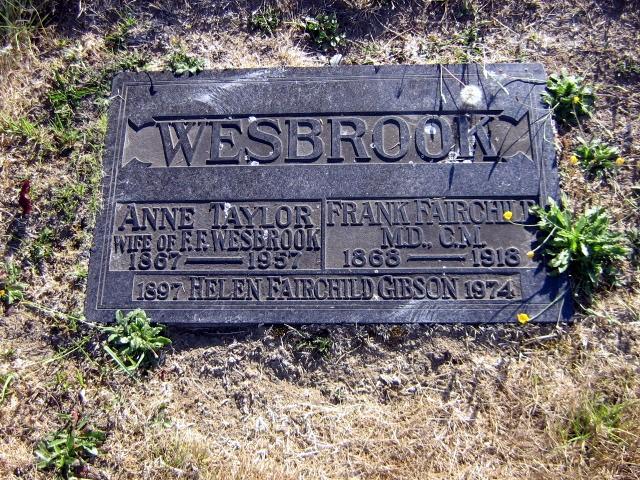A Forgotten UBC Tradition
Graduating classes at UBC have several traditions that they observe – the most well-known being the tree-planting ceremony. There is another tradition, however, that was prominent in the early days of the university, but which is all but forgotten today.
Arts ’25 was the last graduating class to complete their studies at UBC’s Fairview campus; the new facilities at Point Grey would open in September 1925, a few months after they received their degrees. The members of Arts ’25 were very conscious of this fact, and sought ways to distinguish themselves. The class executive requested the advice of their honorary president, Professor Frederic G.C. Wood. It was “Freddie” Wood who suggested a ceremony to honour the memory of UBC’s first president, Frank Fairchild Wesbrook.
During his tenure as president, Wesbrook had struggled to establish UBC on solid foundations. Promised when he arrived in 1913 that the university would be established at Point Grey with the full support of the provincial government, the outbreak of the First World War the following year changed everything. Budgets were cut, and Wesbrook’s vision of an institution the equal of any in Canada, “a Provincial University without provincialism,” was limited to the makeshift facilities at Fairview.
During the war years, Wesbrook continued to lobby for government and public support, both to maintain and enhance the university’s programs at Fairview and to build its permanent home at Point Grey. He was a recognized public figure across the province, and became almost a father figure within the university community. At the same time, Wesbrook spent much of his valuable time corresponding with students and faculty members who had enlisted in the armed forces and gone overseas.
The heavy workload, together with the anxiety he surely felt about his institution’s precarious situation, took a toll on Wesbrook’s physical well-being. A leave of absence in early 1918 did little to improve his health, and he died on October 20, 1918. The consensus among those who knew him was that Frank Wesbrook had worked himself to death in the service of the university.
On the sixth anniversary of his death, the class executive and other members of Arts ’25 laid a wreath on Wesbrook’s grave at Vancouver’s Mountain View Cemetery. In a short speech, Frederic Wood spoke of the untiring efforts made by the first president on behalf of the new university. Wood had been hired by Wesbrook in 1915 as one of the original members of the Department of English. Arts ’25 president Ralph Mathews also gave a brief speech, saying that he hoped future senior classes would make the wreath-laying an annual event in honour of Wesbrook’s memory and so recognize UBC’s debt to him.
In an editorial the following week, The Ubyssey expressed similar feelings:
The very brief and simple ceremony of the placing of a wreath on his grave, makes but a momentary pause in the whirlwind of activity that marks our session, yet it is significant as one of the very few occasions which we devote to the honoring of those who paved the way for us in a struggle which we ourselves, in our own day, have been carrying on. Our pioneering days are too close to us to be viewed with the romance which customarily envelopes the period of foundation-laying, yet with the rising at Point Grey of the stately buildings for which our first president toiled, we should take thought, lest the efforts of the fathers of the University be forgotten.
(“A New Tradition”, The Ubyssey, 30 October 1934)
The consensus among those who knew him was that Frank Wesbrook had worked himself to death in the service of the university.
The event caught the attention of the student community, and became a high-profile part of the cycle of graduating class events. Every October The Ubyssey would publish a reminder of the upcoming Wesbrook Memorial Service – calling on members of the senior class to attend the ceremony at Mountain View, and asking for those with cars to make themselves available to shuttle participants to and from the cemetery. Those who didn’t attend risked being called-out in the pages of the student newspaper:
Although students are only asked to attend the Wesbrook Memorial Service once in their four years, only fifty graduates-to-be braved the rain to pay their respects to the memory of the man who has done perhaps more for the University than any other person either living or dead. Dr. Wesbrook was the first president of the University and as such should be honored quite apart from his services to this institution.... And yet only fifty members of the graduating classes attended.
(“A Duty Sloughed”, The Ubyssey, 21 October 1932)
UBC faced one of its greatest challenges in the early 1930s, when the effects of the Great Depression forced reductions in the provincial government’s operating grants to the university. From a high of $625,000 in 1929, by 1932 the annual budget had been reduced to $250,000 – enrollment was limited, staff levels and salaries were cut, and the maintenance of buildings and grounds was deferred. Proposals were put forward to cut academic programs, eliminate the Faculty of Agriculture, and even close the university altogether. The resulting administrative and personal conflicts provoked by the crisis enveloped the campus like a dark cloud. The Alumni Association evoked the memory of Frank Wesbrook in an effort to counter the prevailing sense of gloom:
Each year when the graduating class of the University... lays a wreath on Dr. Wesbrook‘s grave they pay grateful tribute to the memory of one who, in the brief years of his administration, laid the foundation for all that is worthy in the University today.... Today, when progress has apparently ceased, when dissension and strife reign in place of fellowship, we look back in an endeavor to visualize once again his plan, the beginnings of which he wrought with so much care.
(“Frank Fairchild Wesbrook”, Graduate Chronicle, May 1932)
Every October The Ubyssey would publish a reminder of the upcoming Wesbrook Memorial Service. Those who didn’t attend risked being called-out.
Through the 1920s and 1930s the Wesbrook Memorial Service evolved. The wreath was normally purchased several days ahead of time and placed on display in the foyer of the library. In 1934, instead of students making their own way to Mountain View, a formal procession was organized, with members of the class executive and other designated speakers and guests given preferred seating in the lead cars. Both the class president and the honorary president – the latter often someone who had known Wesbrook personally – would speak at the ceremony.
In 1939 the format of the service was changed, so that it was held at the Wesbrook Memorial Bench in front of the library. Afterwards only the class executive, rather than the entire class of 1940, proceeded to the cemetery to lay the wreath on the grave. This may have been due to war-time travel restrictions (the Second World War had begun the month before) that limited automobile use. Also present for the first time were Frank Wesbrook’s widow Anne, and their daughter Helen.
The memorial service continued to be held annually for another two years. After October 1941 there is no further mention of it in The Ubyssey or any other published source. It must be assumed that its observance was suspended for the remainder of the war, and never revived after 1945.
Frank Fairchild Wesbrook has not been forgotten; the memorial bench, the Wesbrook Building, Wesbrook Mall, and Wesbrook Village all honour his name and memory. However, the simple grave-side service that honoured UBC’s first president has been all but lost in the mists of history.


































